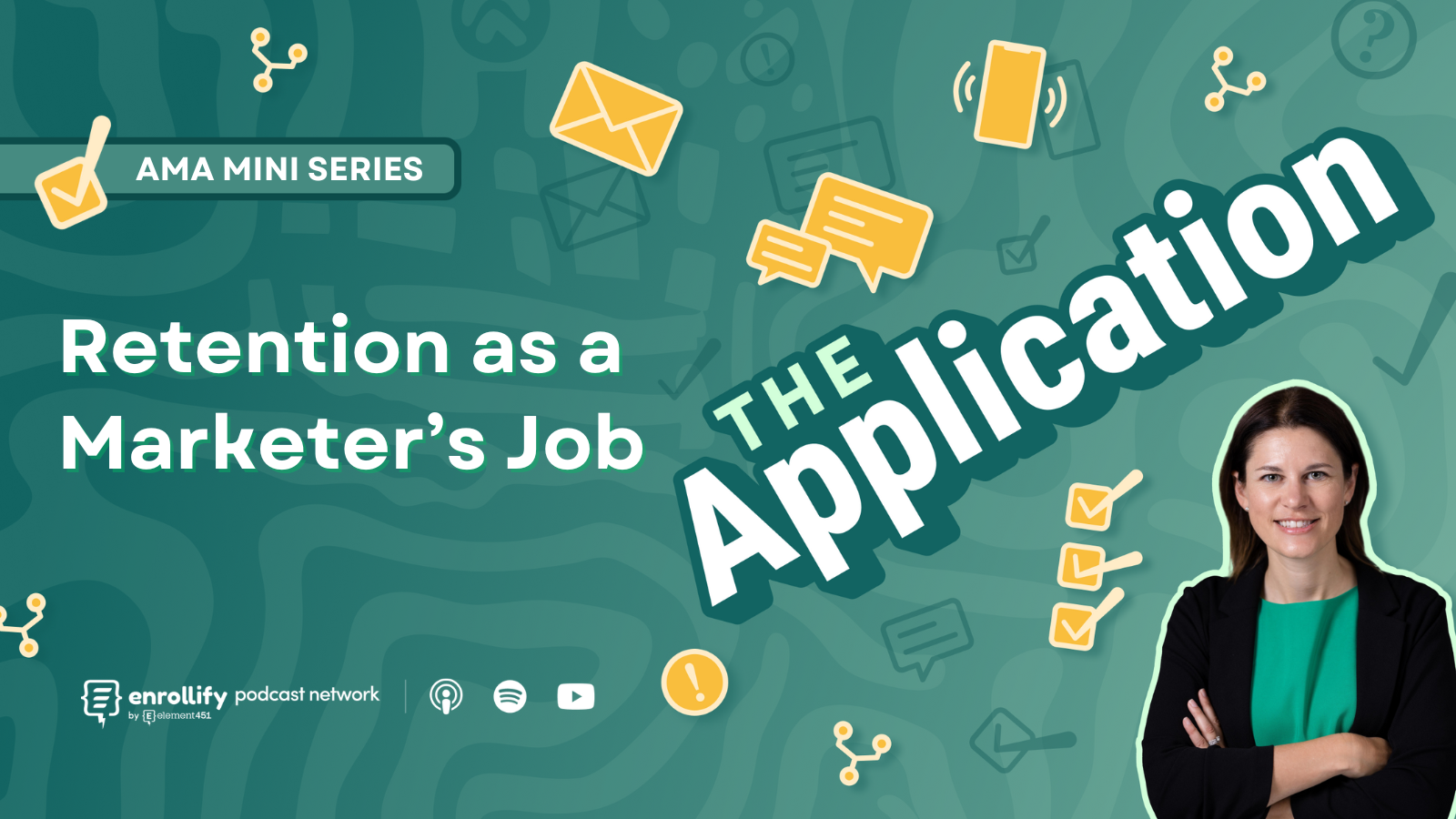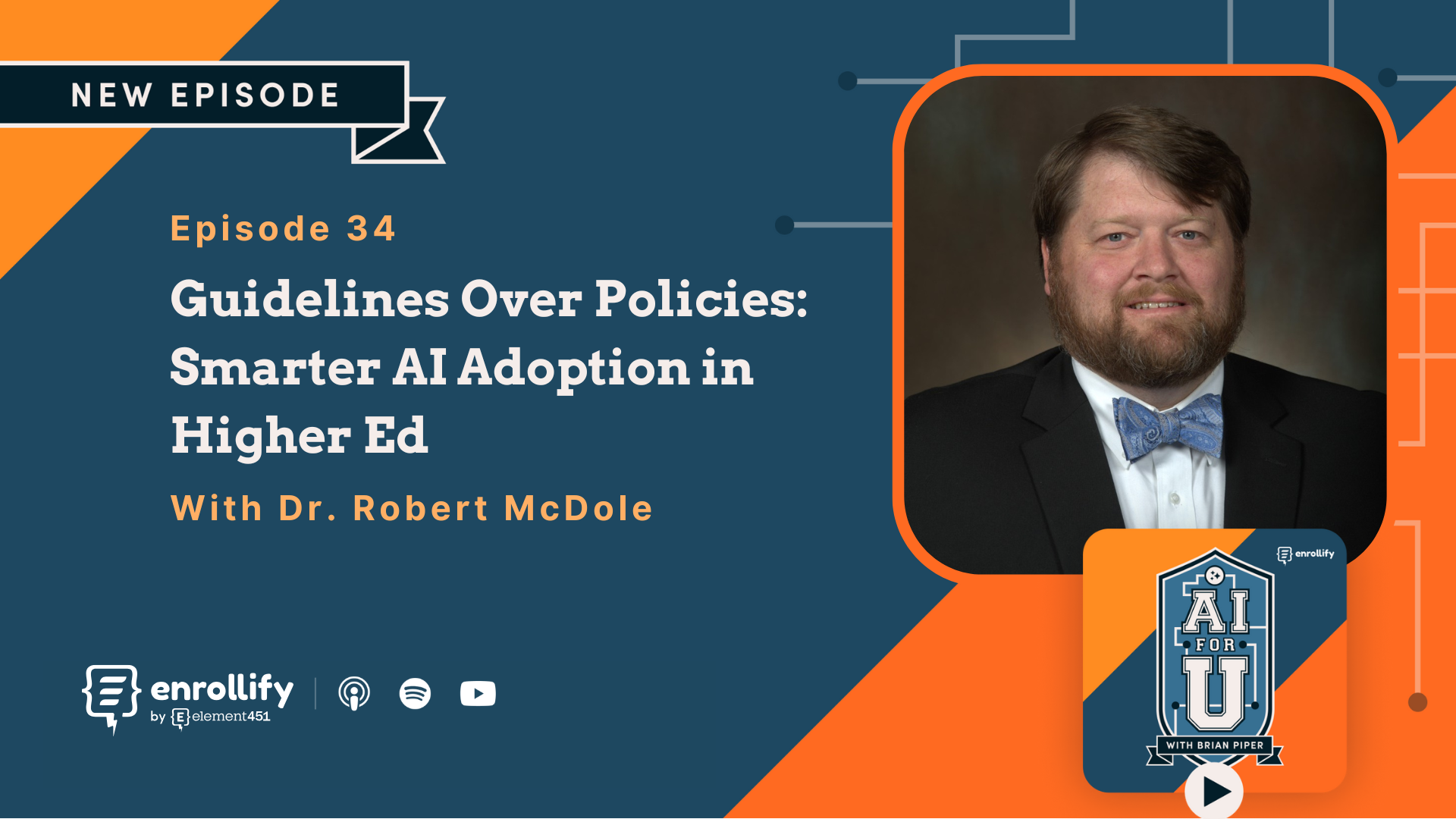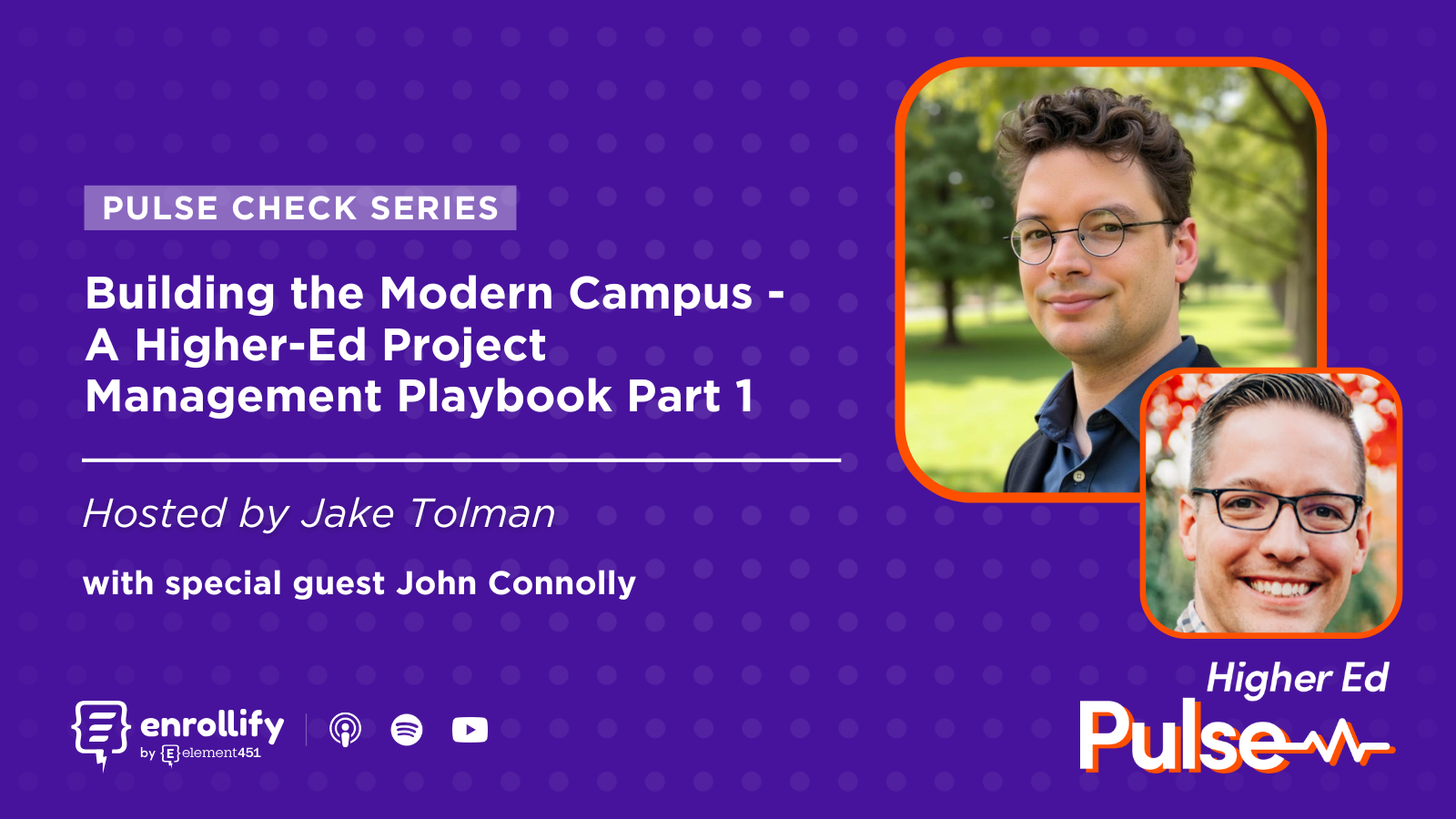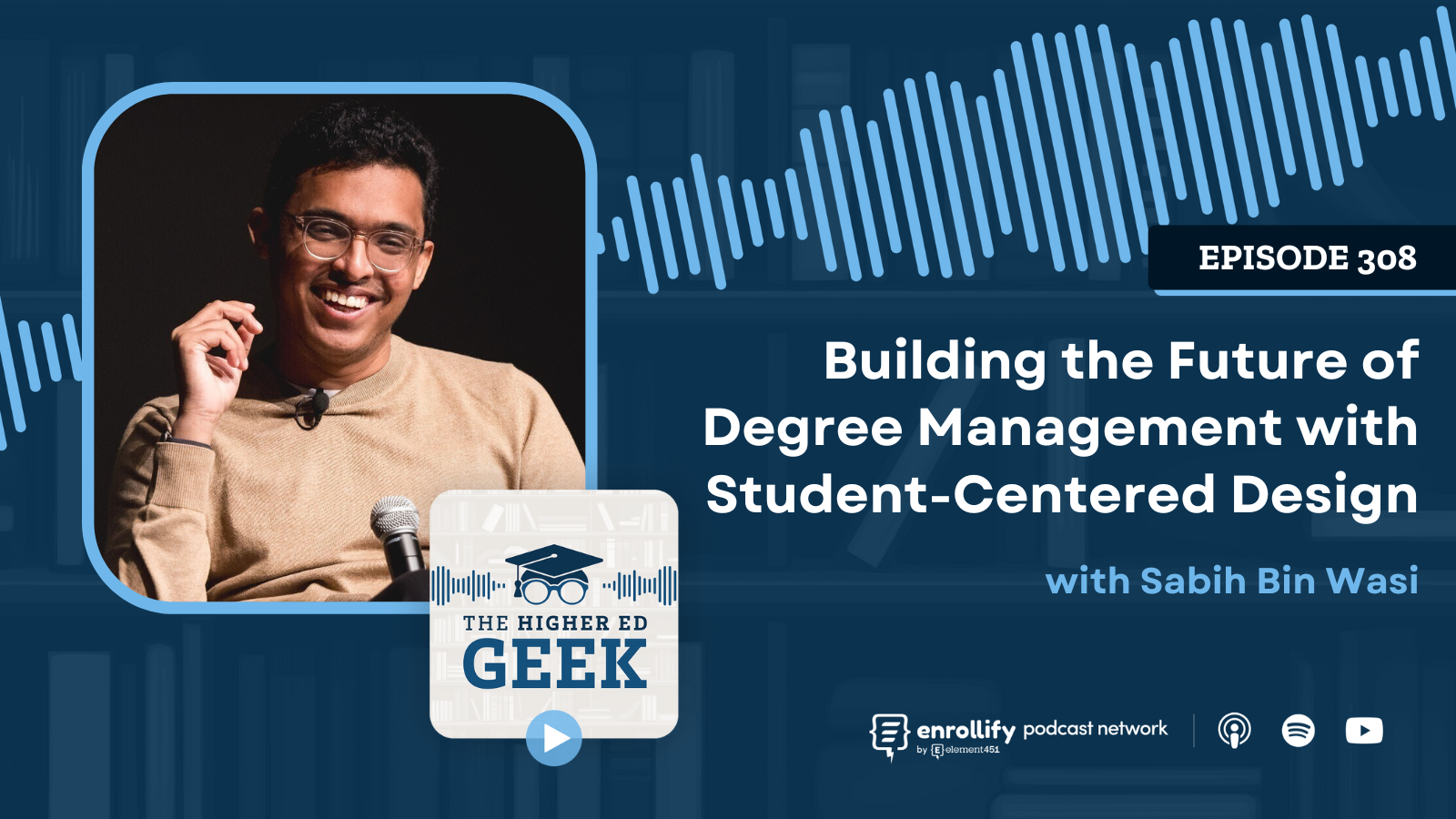About the Episode
About the Episode: Recorded live at the ASU GSV AIR Show, guest Chris Edwards from Kanahoma shares his insights on the integration and impact of artificial intelligence in the education sector. From ethical dilemmas and administrative efficiencies to the real-world implications of AI on campuses, this episode covers the spectrum of challenges and innovations shaping the future of higher education. Chris also touches on recent issues like the FAFSA rollout fiasco, offering a holistic view of the current educational landscape.
Key Takeaways:
- Ethical Considerations of AI: Chris discusses the importance of ethical AI use in education, emphasizing the need for balance and integrity in its application.
- Administrative Enhancements via AI: Insights into how AI can streamline educational administration, potentially reducing costs and increasing efficiency.
- FAFSA Implementation Challenges: A look at the recent troubles with FAFSA’s technology rollout, highlighting broader issues in educational tech adoption.
- Predictions for AI in Education: Chris forecasts critical changes in the EdTech landscape over the next 18 months, stressing the urgency for educational institutions to adopt these technologies.
- Potential of AI to Transform Education: Examples of AI’s impact, from improving student retention to enhancing learning experiences, illustrating the potential for significant advancements in education.
The Critical 18-Month Window for AI Adoption
Chris Edwards kicks off the conversation by highlighting the unique opportunity—and challenge—that the higher ed industry faces with AI. While the ed tech space has matured over the past 25 years, AI introduces an entirely new dynamic. Chris stresses that the next 18 months will be pivotal: if companies in this space can’t deliver real outcomes tied to productivity, enrollment, and retention, they risk losing the trust and buy-in of higher ed institutions.
He notes that public narratives around AI, driven largely by tools like ChatGPT, have created a sense of urgency. However, higher ed’s tendency to lag behind in adopting new technologies puts the industry in a precarious position. The responsibility lies with ed tech providers to clearly demonstrate ROI, while institutions must be open to innovation.
The Ripple Effects of the FAFSA Fiasco
Chris and Mallory dive into the recent FAFSA rollout disaster, discussing its far-reaching implications for admissions offices, budget planning, and student enrollment. With delayed financial aid processing, many institutions are struggling to finalize their incoming classes, which could push recruitment and melt efforts dangerously late into the summer.
Mallory shares insider chatter from her LinkedIn DMs, revealing that CFOs are delaying signing new tech contracts due to revenue uncertainty. Chris predicts that this will create a cascade of issues, from missed implementation windows for new technologies to tighter competition for students in future recruitment cycles.
The duo agrees that technology—and specifically AI—could play a vital role in helping institutions catch up. However, they caution that the window for proving AI’s value is rapidly closing.
Lessons from 2008: Innovate or Stagnate
Reflecting on the 2008 recession, Chris recalls how higher ed weathered the storm relatively unscathed, thanks to increased enrollment in graduate programs and low-interest student loans. However, the current economic environment is far less forgiving.
Chris warns that without significant innovation, many institutions could find themselves in a financial bind. He calls on higher ed leaders to embrace AI as a way to increase efficiency and scale their efforts, noting that the stakes have never been higher.
AI’s Role in Higher Ed’s Future
While the challenges are daunting, both Chris and Mallory remain optimistic about AI’s potential to transform higher ed. Chris emphasizes that AI isn’t just about automating tasks—it’s about fundamentally rethinking how institutions operate. From streamlining admissions workflows to creating personalized, one-to-one student communications, AI has the power to address many of the pain points higher ed has faced for decades.
However, Chris cautions that the industry must move beyond “proof of concept” demos and start implementing real solutions. Institutions that adopt AI early and effectively will be better positioned to thrive in an increasingly competitive landscape.
Connect With Our Host:
Mallory Willsea
https://www.linkedin.com/in/mallorywillsea/
https://twitter.com/mallorywillsea
About The Enrollify Podcast Network: The Higher Ed Pulse is a part of the Enrollify Podcast Network. If you like this podcast, chances are you’ll like other Enrollify shows too!
Some of our favorites include Generation AI and Confessions of a Higher Education Social Media Manager.
Enrollify is made possible by Element451 — the next-generation AI student engagement platform helping institutions create meaningful and personalized interactions with students. Learn more at element451.com.
Connect with Us at the Engage Summit: Exciting news — Mallory will be at the 2024 Engage Summit in Raleigh, NC, on June 25 and 26, and we’d love to meet you there! Sessions will focus on cutting-edge AI applications that are reshaping student outreach, enhancing staff productivity, and offering deep insights into ROI.
Use the discount code Enrollify50 at checkout.
Learn more and register at engage.element451.com — we can’t wait to see you there!















